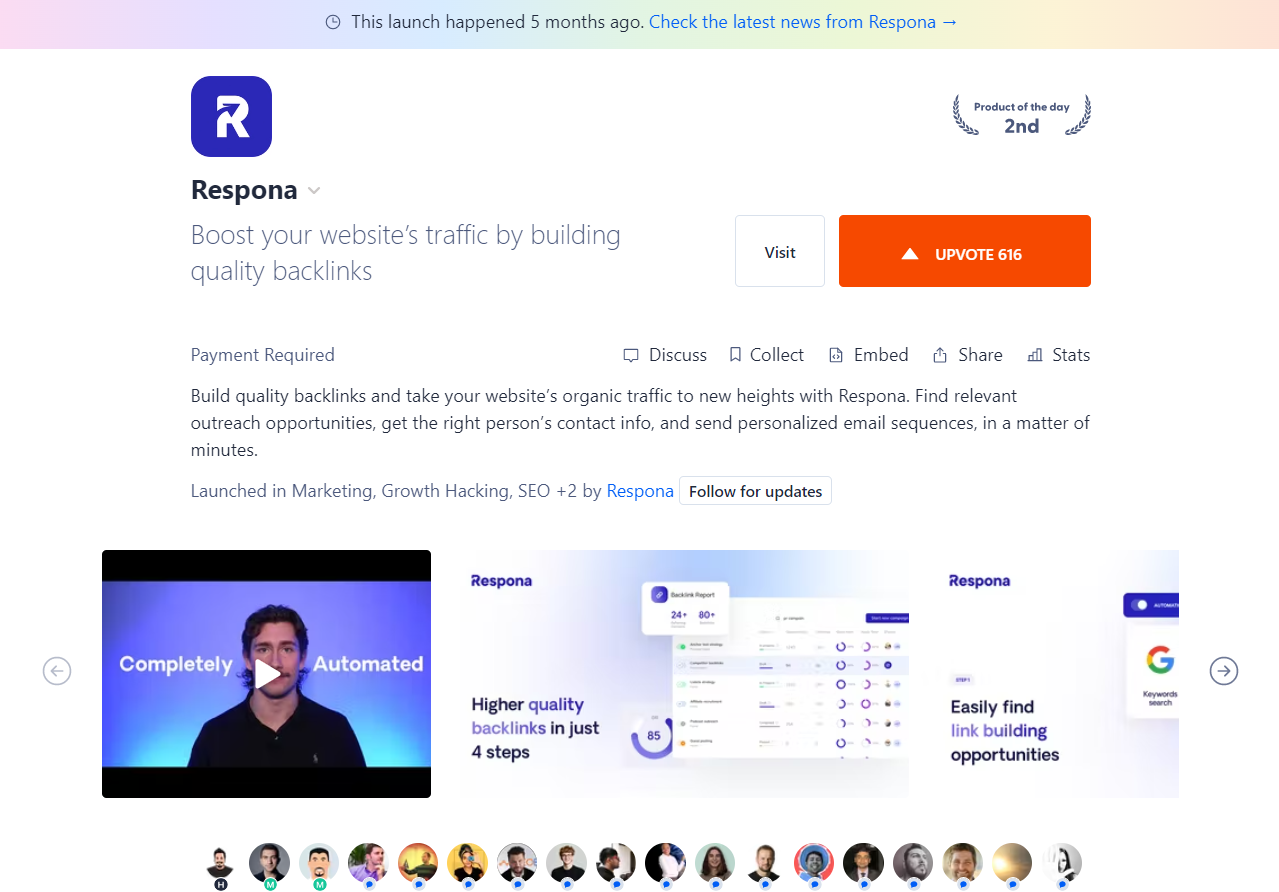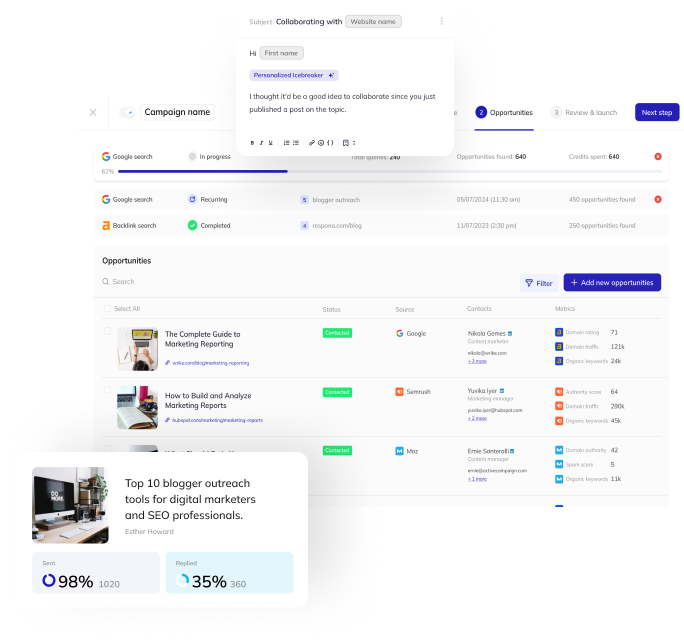Brand Mentions
What Are Brand Mentions?
A brand mention is simply a mention of your brand name on the internet, whether on a website, social media platform, or forum. These mentions can be positive or negative, but either way, they are an opportunity for you to engage with your audience.
If you are mentioned on a website or social media platform, you can reach out to the site owner or platform administrator and ask them to link to your website. This can help improve your website’s search engine ranking.
Brand mentions can also be an opportunity to monitor your online reputation. If you see negative mentions of your brand, you can address them directly and try to mitigate any damage.
Overall, brand mentions are a valuable tool for SEO and online reputation management. By monitoring your mentions and taking advantage of opportunities to engage with your audience, you can improve your website’s ranking and build a positive reputation online.
Brand Mention Examples
Here is an example of our brand mentioned on Visme’s website:

Here is also a part of a review that someone wrote about our tool without us ever directly asking them for it:

How to Get Brand Mentions?
And while brand mentions are technically generated without you directly, asking for them, there are a few strategies you can implement to increase the likelihood of your brand being mentioned online.
In this section, we will discuss six of them.
1. Use social media platforms to promote your brand and interact with potential customers.
There are a number of ways that social media platforms can help you earn brand mentions. One way is by providing a platform for you to share your content with a wider audience.
This can help to increase the visibility of your brand and encourage people to share your content with their own followers.

Another way that social media platforms can help you earn brand mentions is by giving you the opportunity to interact with potential customers and followers.
This interaction can help to build relationships and trust, which can encourage people to mention your brand when they are discussing relevant topics.
Finally, social media platforms can also help to promote your brand through paid advertising. By targeting your ads to people who are likely to be interested in your products or services, you can increase the chances that they will see your brand and mention it to others.
2. Provide high-quality content on your website.
Any modern business requires a good-looking, smooth-running website with regular, high-quality blog uploads to sustain itself.
If you’re just a small local business (for example, a little bakery selling cupcakes), it might seem that maintaining a blog is too much effort for the seemingly small benefit of a few people enjoying your content.
However, the purpose of a blog is much greater than simply giving your audience (no matter how small) something to read.
Quality blog uploads serve as:
- A reason for visitors to stay on your site for longer;
- A way to target relevant keywords in your niche;
- A way to establish yourself as an authority.
All of these things, of course, generate traffic to your resource. And the more traffic you get, the more organic brand mentions you will receive.
3. Use SEO
This ties in directly with what we just talked about.
Search engine optimization helps increase your website’s organic reach, exponentially increasing the chances of people mentioning your brand.
There are three sides to SEO:
- Off-Page SEO
- On-Page SEO
- Technical SEO
Off-page SEO refers to the optimization of a website’s ranking in search engine results pages (SERPs) through activities that take place outside of the website itself.
Common off-page SEO activities include link building, social media engagement, and optimizing website content for local search.
On-page SEO is the process of optimizing a website for Google search with the goal of earning higher web traffic levels and improving the visibility of the site.
The first step in on-page SEO is to choose the right keywords.
Keywords are the words and phrases that potential customers use to search for products and services like yours. To choose the right keywords, you’ll need to think like your customers and understand what they’re likely to search for.

Once you’ve chosen your keywords, you can incorporate them into your website in a way that will help Google understand what your site is about and improve your chances of ranking for those keywords.
There are a number of places on your website where you can use keywords to improve your SEO. These include the title tag, meta tags, header tags, and body content.
The title tag is the most important place to use keywords on your website. The title tag is the text that appears in the search engine results page (SERP) when your website comes up for a particular keyword.
This is what potential customers will see and use to decide whether to click through to your website.

To optimize your title tag for SEO, you’ll want to include your keyword(s) and make sure it accurately reflects the content on your website.
The meta tags are the second most important place to use keywords on your website. Meta tags are snippets of text that describe the content on your website. They appear in the code of your website, but not on the actual web page itself.
To optimize your meta description tag, you’ll want to include your keyword(s) and make sure it accurately reflects the content on your website. You’ll also want to keep your meta description under 155 characters so that it doesn’t get cut off in the SERP.
The header tags are the third most important place to use keywords on your website. Header tags are the HTML tags that are used to structure the content on your website. There are six different header tags, and each has a different level of importance.
The most important header tag is the H1 tag. The H1 tag is used to indicate the main headline of a web page.
The next most important header tag is the H2 tag. The H2 tag is used to indicate subheadings on a web page. This tag can be used more frequently than the H1 tag, but you should still use it sparingly.
The other header tags (H3-H6) are less important, but they can still be used to help structure the content on your website.
To optimize your header tags for SEO, you’ll want to include your keyword(s) and make sure the header tags accurately reflect the content on your website. You’ll also want to use header tags to help break up your content and make it easier to read.
The body content is the fourth and final place to use keywords on your website. Body content is the actual text on your website. This is where you’ll want to use your keywords the most, as it’s the best way to show Google what your website is about.
When optimizing your body content for SEO, you’ll want to use your keyword(s) throughout the text in a way that sounds natural and makes sense.
There are many tools like MarketMuse and SurferSEO that can help you optimize your content for keywords.

In addition to using keywords, there are a few other things you can do to improve your on-page SEO. These include:
– Optimizing your website’s URL
– Optimizing your website’s images
– Creating quality content
URL optimization is the process of making your website’s URL more friendly for Google search. A friendly URL is one that accurately reflects the content on your website and includes your keyword(s).
To optimize your URL for SEO, you’ll want to include your keyword(s) and make sure it accurately reflects the content on your website. You’ll also want to keep your URL short and to the point
The URL of this page is: www.respona.com/glossary/brand-mentions
Image optimization is the process of making sure your website’s images are properly formatted and sized for Google search. Properly formatted images will load quickly and be easy to view on all devices.
To optimize your images for SEO, you’ll want to make sure they’re in the correct file format (PNG or JPEG), and that they’re the correct size. You’ll also want to include your keyword(s) in the file name and alt text.
Here is an example of an alt text for an image in one of our own blog posts:

And this is the image:

Technical SEO refers to SEO practices aimed at ensuring that your website runs smoothly, and is perfectly indexable for search engines.
Indexability can be improved in two ways:
- Internal linking
- Submitting a sitemap
4. Use traditional marketing techniques.
There are a number of traditional marketing techniques that can help you gain online brand mentions.
For starters, you can use PR and media relations to generate buzz and awareness for your brand.
You can also leverage social media platforms to get people talking about your brand.
Additionally, you can use influencer marketing to reach new audiences and get them talking about your brand.
Podcasting is also a great way to get your (and your business’) name out there:

5. List your website on online directories and review sites.
If you’re a SaaS company, then places like Product Hunt can be a very lucrative way to get people to start talking about you:

As for physical stores and businesses, Yelp, Google My Business, TripAdvisor, and similar alternatives should be a big focus.
Getting listed on those is not difficult, but can make a big difference for your brand’s visibility.
For example, all you need to do to get listed on Google My Business is create an account and follow the steps provided by Google.
6. Reach out to unlinked mentions.
Unlinked mentions are when someone mentions your brand or website, but doesn’t include a link back to your site. This is a missed opportunity for an easy backlink.
There are a few ways to turn unlinked mentions into backlinks. The first is to reach out to the person or site that mentioned you and ask them to add a link. This can be done politely and usually doesn’t take much effort.
There is a number of ways that you can find unlinked mentions of your brand or website. The first way is to use a Google search.
Simply enter your brand or website name into the search bar and see what comes up. If there are any results that do not have a link to your website, then those are unlinked mentions.

Another way to find unlinked mentions is to use a tool like BuzzSumo or Mention. BuzzSumo allows you to search for your brand or website and see all of the mentions, both linked and unlinked. This can be a great way to find unlinked mentions that you can then reach out to and ask for a link.
You can also use Ahrefs’ Content Explorer.
Enter your company name in the search bar and keep the source drop-down as “everywhere”.

Then, scroll down to the results and in the “highlight unlinked” filter, paste the URL of your website.

You will then be left with a list of unlinked mentions to your website.
Bottom Line
Brand mentions are a powerful tool for spreading awareness about your business, establishing yourself as an authority within your industry, and gaining the trust of potential customers.
By following the strategies above, you should be able to expand your reach and earn more brand mentions for your business.

